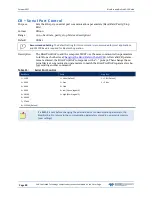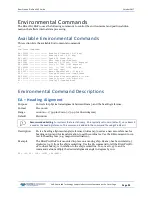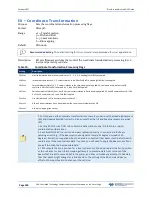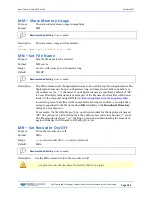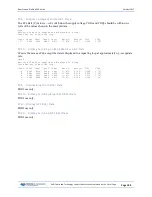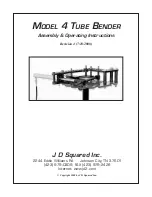
RiverPro and RioPro ADCP Guide
October 2017
EAR-Controlled Technology Subject to Restrictions Contained on the Cover Page.
Page 101
Beam Coordinate Systems
The RiverPro/RioPro can produce velocity measurements in any of the following four sets of coordinate
axes by setting the
. Except for the first, they are all right-handed orthogonal systems. The
user operational requirements dictate the best coordinate system to be used.
Earth Axis, also known as Geographic or Geodetic Coordinates
. (E, N, U) Earth Axis are selected (default set-
ting) with command EX11xxx. These axes are named east, north, and up. Strictly speaking, these terms
refer to true orientations, although magnetic orientations are often used instead. This is the most com-
monly used coordinate system because it provides a stable reference frame for ensemble averaging.
Radial Beam Coordinates
. (BM1, BM2, BM3, BM4) Radial Beam Coordinates are selected by the EX00xxx
command. These are the “raw” velocity measurements measured independently by each transducer, in
units of millimeters per second. The sense is positive when the motion is towards the transducer. These
axes are not orthogonal.
Instrument Coordinates
. (X, Y, Z) Instrument Coordinates are selected by the EX01xxx command. This set
of axes is always oriented the same relative to the transducer head. Looking at the end view of the hous-
ing, the transducers are labeled clockwise in the order 3-2-4-1 (Figure 25). When you look at the face of
the transducer head, the transducers are labeled clockwise in the order 3-1-4-2 (Figure 26). The X-axis
lies in the direction from transducer Beam 1 towards transducer Beam 2 and the Y-axis lies in the direc-
tion from transducer Beam 4 towards transducer Beam 3. The Z-axis lies along the axes of symmetry of
the four beams, pointing away from the water towards the housing. The internal compass is mounted so
that when the X-Y plane is level, the compass measures the orientation of the Y-axis relative to magnetic
north.
Figure 25.
X, Y, and Z Velocities
The PD0 Bottom Track output data format assumes that the instru-
ment is stationary and the bottom is moving.
•
If Beam 3 is going forward, then the Y velocity is nega-
tive.
•
If Beam 2 is going forward, then X velocity is negative.
•
If the bottom is going towards the face of a down facing
ADCP, then Z is positive.
Ship Coordinates (or Righted Instrument Coordinates)
. (S, F, M) Ship Coordinates are selected by the
EX10xxx command. TRDI uses the names Starboard, Forward, and Mast, although these axes are more
commonly called the pitch, roll, and yaw-axes, respectively. Assuming that Beam 3 is aligned with the keel
on the forward side of the ADCP, for the downward-looking orientation, these axes are identical to the in-
strument axes:
S = X, F = Y, M = Z




